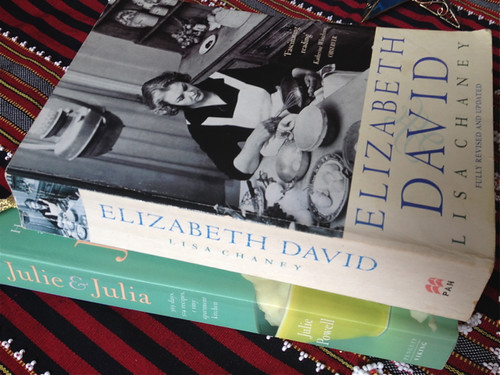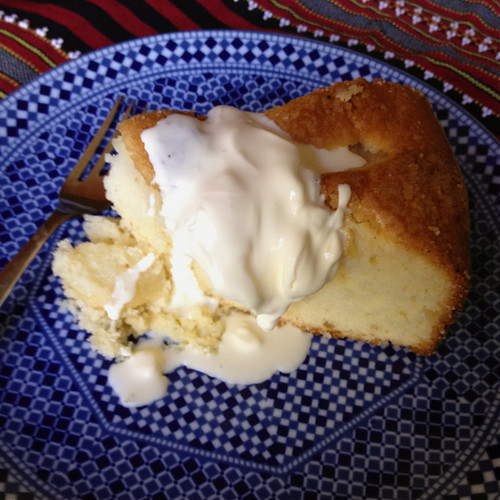I still read for pleasure and escape. For some reason I've recently been rereading quite a bit. Partly this is because of a slight guilt I feel at spending so much on books (even frequently purchased Kindle books mount up over time) and partly it's because I read so much and with such distracted attention that I often forget the detail - or even the overall narrative - of what I read. When I was helping to pack my daughter's books for her house moving I came across an old copy (originally mine!) of Nora Ephron's 'Heartburn' and galloped through it. Read this book if you haven't already done so. It's a fictionalised account of Ephron's bitter marriage break up with Carl Bernstein of Bernstein and Woodward Watergate fame, and it's larded with comfort food recipes that have butter as a significant ingredient. (Ephron once said in an interview 'You can never have too much butter – that is my belief. If I have a religion, that's it') While there's some bitterness, it's laugh-out-loud funny and ultimately life-affirming (as we used to say in english literature tutorials in the 1960s).
For no particular reason I then reread Lisa Chaney's biography, 'Elizabeth David'. I suspect every Australian woman who moved out of home and began cooking in the 1950s or 60s has a Penguin edition of at least one of Elizabeth David's cookbooks stashed somewhere. I grew up with the then-accepted Australian diet of plainly cooked meat and veg, and a vast array of cakes, biscuits, slices, and everyday desserts. Elizabeth David's books came at just the right time for me, when hitherto unknown vegetables such as zucchini and eggplant were available in greengrocers' shops, and modest Italian restaurants were almost within reach of a student's budget. Elizabeth David was a pernickety perfectionist who became even more difficult as she aged, but her recipes, her evocative writing style, and more importantly, her insistence that good, local, fresh food was within any cook's reach, revolutionised many people's approach to food.

More than a decade after Elizabeth David's first books, Julia Child published her voluminous 'Mastering the Art of French Cooking'. Julia Child has recently had a resurgence of recognition through Julie Powell's 'Julie and Julia' and the same-named film starring the wonderful Meryl Streep. I raced through my rereading of 'Julie and Julia'. Fun, fun, fun. Julia Child, by the way, shares Nora Ephron's love affair with butter - such a guilty pleasure nowadays. It's interesting to compare Elizabeth David and Julia Child. The similarities are obvious in that they shared the desire to place fine food and good cooking within the reach of the everyday cook. But they do this in very different ways. Julia Child's recipes are painstaking - every step is outlined and every difficulty anticipated. Elizabeth David, on the other hand, is more interested in inspiring her readers by evoking the traditions and spirit of the recipe. She encourages you to improvise and above all, to sacrifice all to freshness and seasonality.
I feel much more at home with Elizabeth David than Julia Child, though there are recipes from both that are still very much part of my go-to cooking repertoire.
After all this cooking reading I was inspired to bake. This happens infrequently nowadays. I had some peaches that were nearing the end of their usefulness and I remembered a recipe for peach pie in 'Heartburn'. But my copy of 'Heartburn' has disappeared again - I expect recaptured by my daughter. I retreated to one of those recipes I've made so many times that it is foolproof. It came to me from my old friend Erika as an apple cake recipe, though I never knew her to make it with apples; I've eaten her cake with apricots, berries, plums (yum), but not apples. I've made it with apples many times and it's great, but I thought it would also be good with peaches. It was. So, in the spirit of Nora Ephron's recipe-laced prose I offer you...
Erika's Apple (or Peach) Cake.
120g butter
100g sugar (white or natural - whichever you prefer)
3 eggs
1 teasp vanilla
200g self-raising flour (I've used white flour, but 50/50 wholemeal and white is also good)
2 apples, quartered (or 2-3 peaches or plums, or whatever)
3 tabs milk
1 tablespoon extra sugar
Beat sugar and butter till well-incorporated. Add eggs one at a time, while beating. Add vanilla. Fold in sifted flour, roughly a third at a time, alternating with milk. Place mixture in greased cake tin and press in quartered or chunkily cut fruit. Sprinkle with extra sugar (and cinnamon if using apples). Bake in preheated 175 celsius oven for around 35 minutes. The cake is fine by itself, or good served with cream or sour cream.
If you are feeling energetic, you can make a crumble of roughly mixed butter, flour and brown sugar to sprinkle on top of the cake before baking.

This is what my mother would have called a 'plain cake' - one to be served everyday to family or farm-workers, but not the kind of cake you make if you wish to impress someone with your baking!
6 comments:
I am curious. Here in North America - land of the K.I.S.S. mantra - our recipes speak in cups. 1 cup of this, 1/2 cup of that. When a recipe speaks in grams - do you weigh the ingredients?
Delicious cake. This is in several of my German cookbooks (but always with apples). I will have to try your suggestions.
Brenda, your comment left me wondering...the short answer is that yes, I do weigh. I have a small electronic scale that lives in a kitchen drawer and that can be set to measure either in metric or imperial measures. The longer answer is that if you live in Australia, and possibly if you use recipes from the internet, you need to be adaptable. I suspect the measurements for this recipe are in grams because my friend Erika grew up in Germany (this relates to your comments, Sarah!). Most modern Australian recipes would also use metric measurements. But some of my old cookbooks, Elizabeth David, for instance, and scrappy recipes handed down from my mum or grandmother, use either imperial measurements or cups, tablespoons etc. Even so, you need to be a bit careful. US cups are slightly smaller than British or Australian ones (what some of my old recipes call a 'scant' cup), and a US tablespoon is more like an Australian dessertspoon. With such basic baking as this cake, none of this really matters. The measurement I find most difficult and constantly need to look up its equivalence is the US 'stick' of butter. Our butter is packaged quite differently so this one is always confusing.
Thanks Lyn - more books to read hurrah - I make a version of the apple cake as well with plums or apples depending on what is around - it is also a Polish cake that Mr SV ate as a child and I have been trying to replicate for a few years now
there is nothing more impressive than a good apple cake, i think. yum. like missfee i am still searching for the perfect recipe!
Plaudits galore for this apple (or pear or plum) cake. It is easy to make, and tastes yummy.
Thank you for the Nora Ephron recommendation. You certainly do read an amazing number of books Lyn.
And your photos as always capturing a slice of the joie de vivre. I always feel happy after dipping into your blog. Barb.
Post a Comment